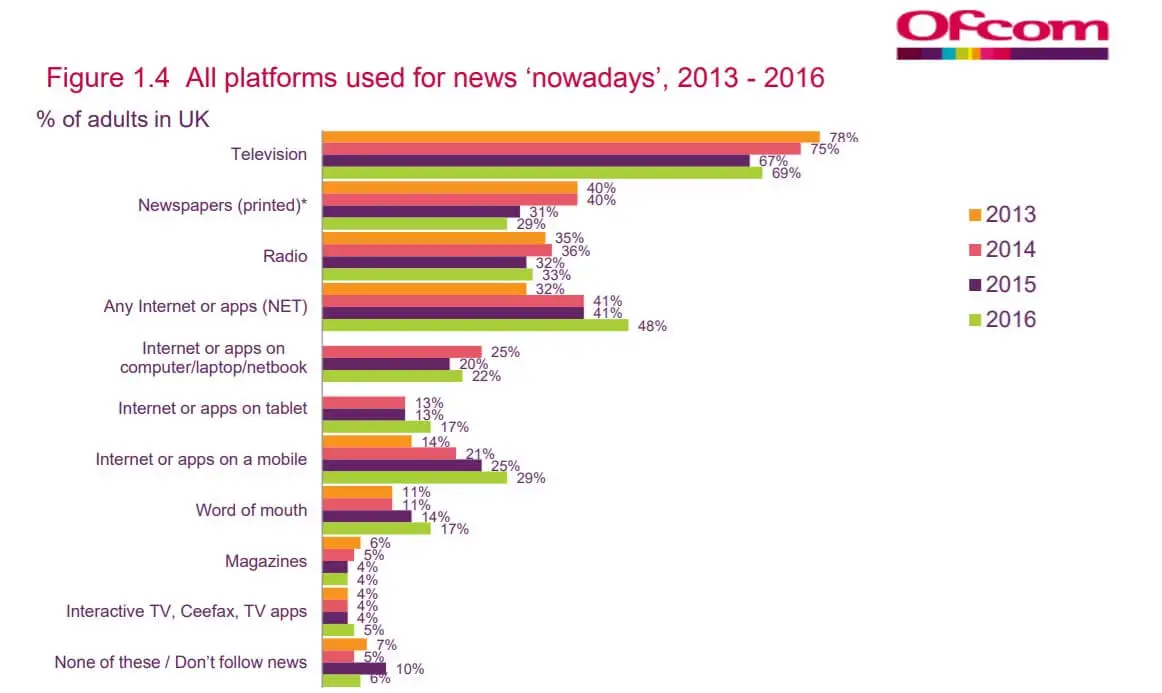Content of the New Age
Imagine it’s 1995. Your parents have just got back from work, your dad drops onto the sofa, and unfolds a newspaper. Historically, our news only came from a handful of sources. TV, newspapers, industry-specific magazines, word of mouth, and so on.
Now let’s fast-forward to 2020. Your phone is constantly pinging you with the news. Social media updates, breaking news reports, friends updating you. You’re inundated with content. If you have a question, you can access the answer within seconds from a choice of hundreds of sites. Your daily news cycle could span everything from current events and gadgets to sewing and landscape gardening. Whatever you’re interested in, there is a news source for it available at the touch of a button. The key to this though? The majority of it is free.
As a result, mainstream publishers such as The Guardian and Wall Street Journal are struggling. Many are implementing fee structures and donation requests to try and make up for the declining print industry and subsequent loss of ad revenue.
In their place is a new form of media consumption. Something that is making accessibility and instant browsing even simpler and enjoyable for the user – content aggregation. Combine this with sophisticated data extraction so you can publish content that’s super-valuable to your users.
What is content aggregation?
Increasingly, review sites and curated content sites are aggregating data from around the web and presenting it in an easy-to-use format for the user. Think about sites like Flipboard, Google News and even Reddit. All these present forms of aggregated content.

Source: Flipboard.com
The simple idea involves pulling content from other sources and collecting it all in one place. This allows easy browsing for the user and the ability to jump between topics and industries. Users don’t even have to click on an article. They can simply view the headline or summary and move on to the next.
Where does data extraction fit in?
Data extraction is a way of pulling back the flesh of a website and seeing how the parts work – seeing what’s going on under the bonnet. This provides lots of different insights that can be used in a variety of industries and to inform a range of objectives, including content aggregation.
The way that data extraction can help content aggregation is pretty simple – it tells you which web pages are getting the most interactions, directing you to the ones that are most beneficial to source and then collect for redistribution.
Extracting data may seem intimidating, but it is incredibly straightforward – with the right equipment. Octoparse is a powerful data extraction tool. It’s super easy to use and allows you to source data from a huge range of sources. The value of this in content aggregation is clear – you can quickly find the right content for your users, driving up engagement by publishing the right content.
Content Aggregator vs. Content Curator
Automation is the key difference. Content curators painstakingly collate the best content on a given topic and build articles around them. Think of articles like ‘2019 music predictions from 10 Leading Producers”. The author of that article hasn’t spoken to each producer about building that article. They’ve curated content from various outlets — be they social media accounts, blogs, or news sites – and crafted an article around them.
Aggregators use data to build their content. These data aggregators mine keywords from the sites in their databases and build dashboards for users to access content from a variety of sources. This takes the onus of writing content away from the aggregator and makes for a better user experience.
What does this mean for publishers?
Content and data aggregators pose a unique challenge for publishers, particularly those who generate revenue from on-site advertising or subscriptions. If users are accessing news via sites like Flipboard or News360, music via Spotify, and reviews via Metacritic, then it means they’re likely not visiting or purchasing the source content. Given that, where does the money come from?
Flipboard says that although it offers all its content for free, it benefits the end publisher because it sends traffic to sources. Flipboard has 100 million monthly users and media outlets have noticed recent spikes in traffic referred from the site. This relationship is mutually beneficial.
Flipboard enjoys traffic from regency and long-tail searches, as well as repeat visits from those who prefer aggregated content, and the end publisher gets ad revenue from those landing on the site. Metacritic operates on a similar model. Consolidating not only review sites but also individual critical pieces into their one-stop summaries.
What about the loss of subscription fees?
Does the ad revenue make up for the loss of subscription fees? Some would argue not. And just because a site sees a spike in referral traffic from a site providing content aggregation, it doesn’t necessarily mean they’ll return. It’s more likely they’ll revisit their dashboard and only click through to the same publisher if they have another headline that catches their eye.
Think about how Amazon, eBay, and Shopify have cornered the eCommerce market to such an overwhelming extent. Shopify, in particular, is pertinent here, as you can connect it to Blogfeeder and use the tool to sync with any blog and pull through all of the content that you desire – some of the different content sources it connects to include, WordPress.com, Tumblr, Pinterest, Blogger/Blogspot, Medium, and Facebook (status updates).
Yet, despite this, a huge number of sellers choose to sell through Amazon to take advantage of its existing platform – rather than creating something independently. Why? They know that their personal stores could never hope to get Amazon-level traffic. Of course, once they go down that route, they’re stuck: when people can get their products on Amazon, they won’t bother trying to buy from them directly.
A chicken and egg situation for publishers
It’s a tricky situation for publishers. There’s no doubt about it. Users love aggregators. As their popularity increases, we may see sustained traffic drops on end publisher sites in favor of article-specific spikes. But the aggregators need these end publishers to keep creating content in order to exist. Otherwise, what would they aggregate? The benefit to users is the collation of all these highly respected sources in one place. If they drop off, will they be satisfied with the B or C-list replacements? Unlikely.
Some aggregators eventually establish their own expertise and move towards positions of authority and influence in their fields, but not all of them: some continue to aggregate indefinitely, never getting involved in the production. As such, to continue, there must be clear benefits for both publishers and aggregators. Publishers should understand the benefits to the end-user of having content in one place, while aggregators need to appreciate the time and effort it takes to create the content they’re displaying.
It’s also important to keep publishers motivated. If social media channels, aggregators and syndicators are keeping hold of the majority of traffic and ad revenue, then the incentive for publishers to continue creating excellent content diminishes. Why would they? The only way a publisher will be motivated is by generating revenue from their work. This way they can pay contributors, editors and developers to maintain their own site, while enjoying the benefits of traffic spikes from aggregators. It’s a two-way relationship that needs to be mutually beneficial to have a lasting impact on the internet.
Are content aggregators the future?
Publishers are constantly evolving their revenue streams, optimizing ads and subscription models. Some, like the Washington Post, are even reporting year-on-year profits, unthinkable a few years ago when many prophesied the decline of the mainstream digital media industry.
But there’s no doubt that the two sides need to work together. Relentless aggregation with no thought for publishers will eventually lead to lackluster content and the “damned if you do, damned if you don’t’ status aggregators held over publishers will wane. However, it’s also impossible to ignore the value aggregators provide to the end-user. All the content they need from their favorite sources in one place, accessible instantly. In a world where instant gratification is the new norm, it’s looking increasingly likely that aggregators will be the content publishers of the future.




